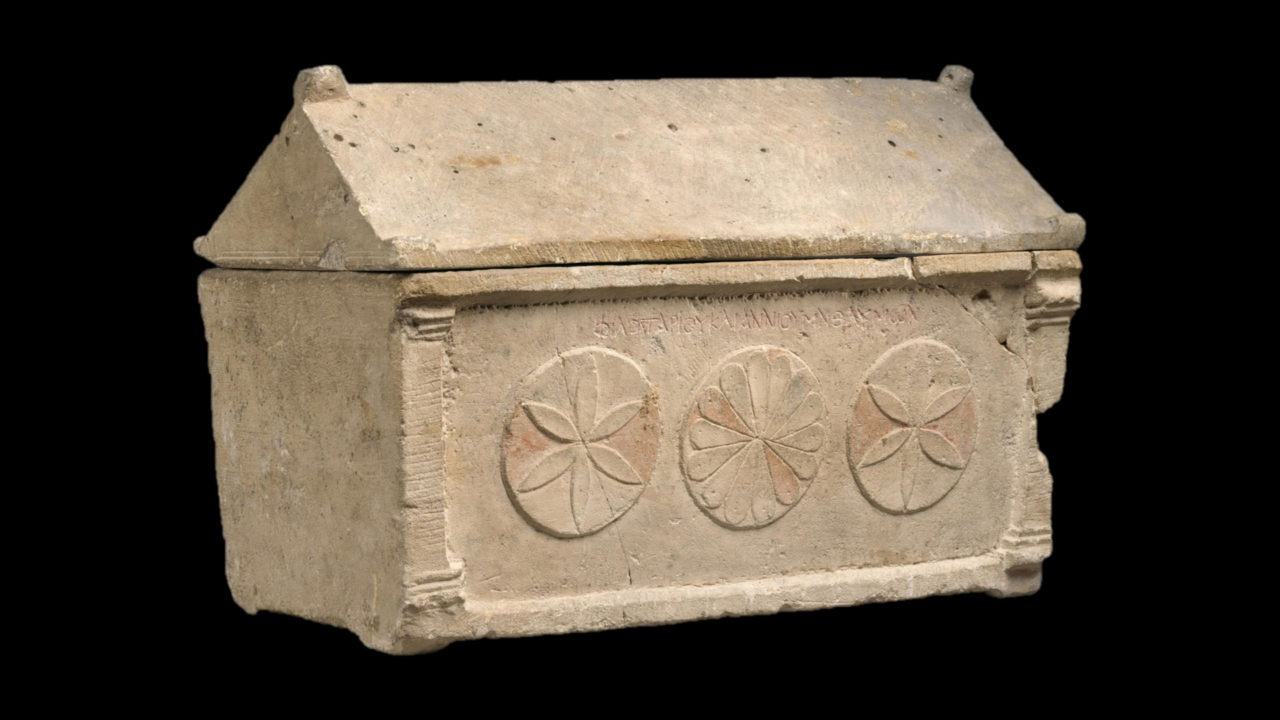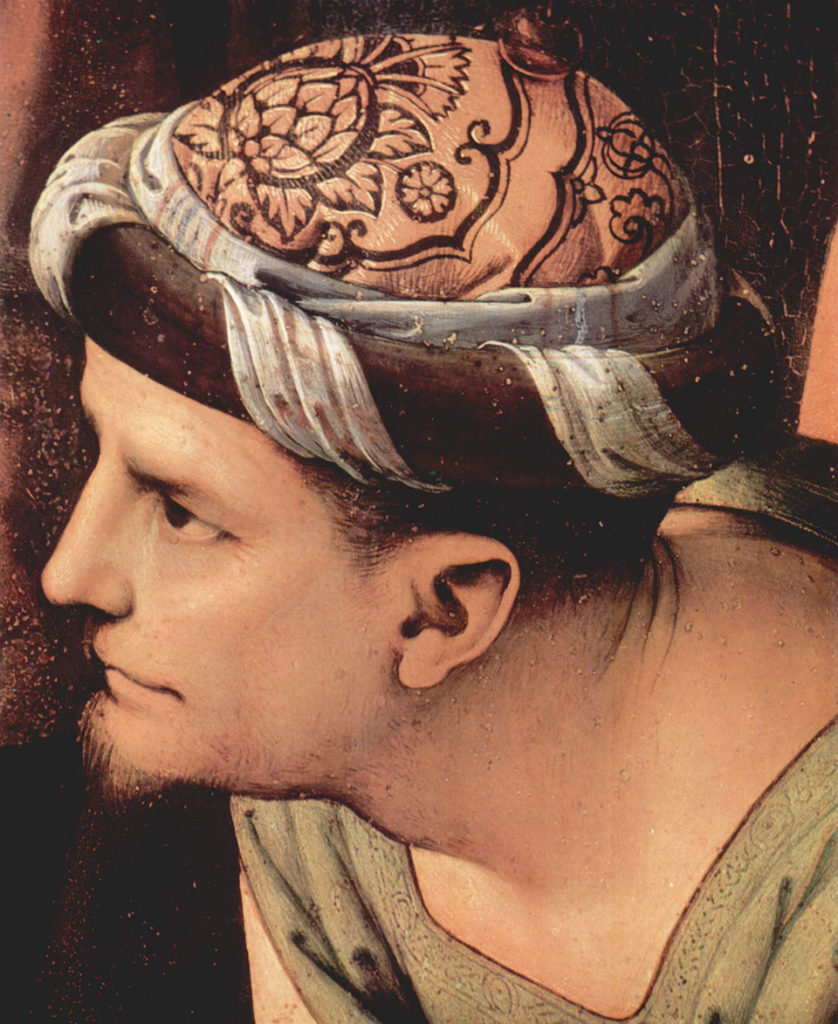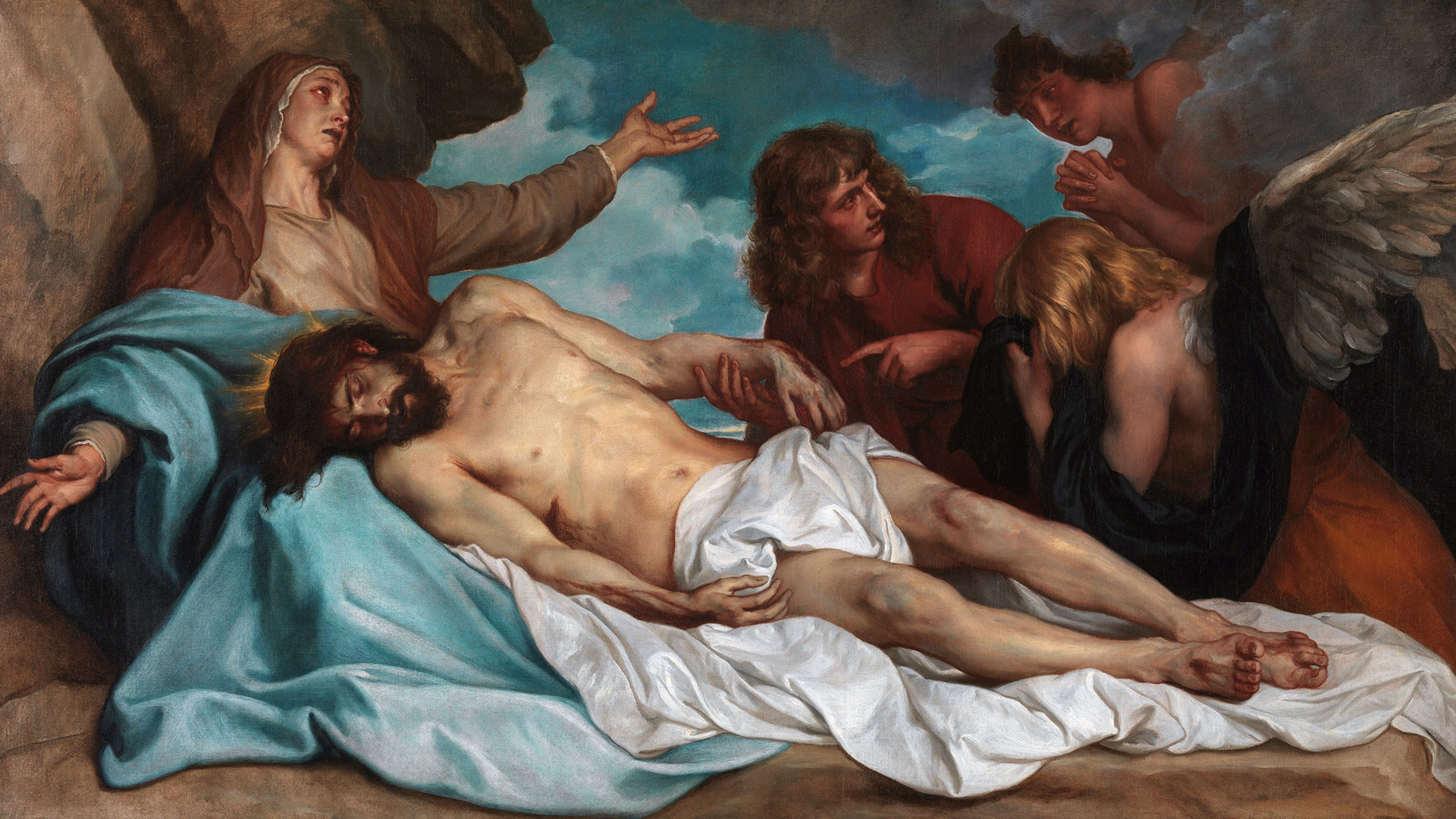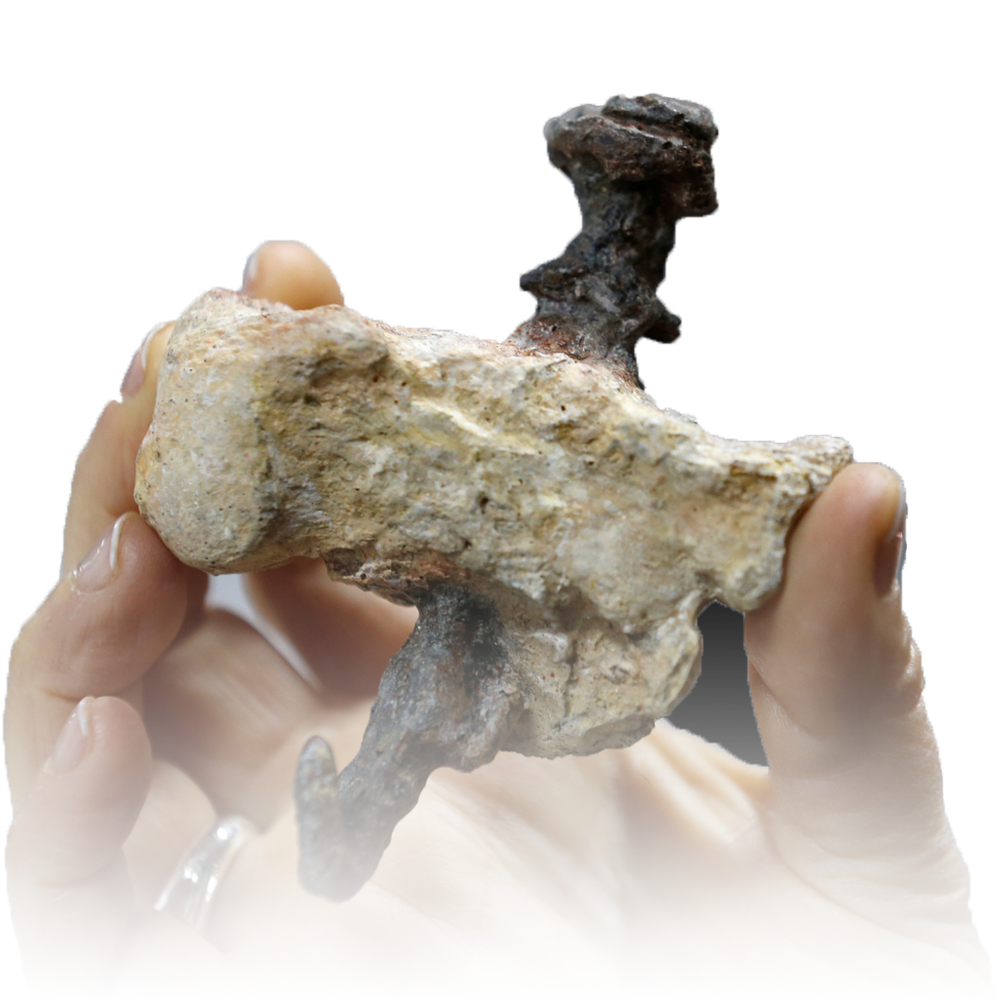- thrown to animals to eat
- buried in shallow graves
- Romans let Jesus stay on the cross
- his body was cremated
- no burial for crucified people
- six early sources
- Jewish burial practices
- historicity of Joseph of Arimathea
- Yehohanan’s Ossuary
- no competing story exists
Sources
We have six early independent sources for the burial of Jesus.
- Matthew 27:60
- Mark 14:46
- Luke 23:53
- John 19:40
- 1 Corinthians 15:4
- Acts 13:39
Burial after crucifixion
Romans
In the Roman Empire, crucified victims were left alive or dead for wild beast like birds to prey on4:
- Horace, “Epistle”, 1.16.46-48
- Juvenal, “Satires”, 14.77-78
- Artemidorus, “Dream Book”, 2.53
- Petronius, “Satyricon”, chapter 11-12
- Amyzon, cave I

While this was common in the Roman empire, Rome allow local customs and rituals in Judea to carry on5.
Jews
The Jewish laws demands for dead bodies to be buried before sunset, if possible, with their family:
- Deut 21:22-23
- Tobit 1:18-20; 2:3-8; 4:3-4; 6:15; 14:10-13
- 11Q Temple Scroll 64:7-13
- Josephus
- “Jewish War”, 3.377, 4.317, 4.5.2
- “Antiquities of the Jews”, 4.202 & 4.265
- “Against Apion”, 2.211; cf. 2.204
- Philo, “De Specialibus Legibus” III 151-152
- b. Sanhedrin 46b
- Mishnah Sanhedrin 6:5
- 4Q491, 4Q285, 4Q251 (Dead Sea scrolls)
That ritual is also put into practice in the Old & New Testament:
- Joshua 8:29
- Joshua 10:26
- 2 Samuel 4:12
- Ezekiel 39:14, 16
- Mk 6:14-29
- Acts 5:6-10
Even the skulls of Joseph were carried by the Israelite during the crossing of the Red Sea (Ex 13:19) and later buried in Shechem (Josh 24:32).
Resurrection of the flesh

Contrary to their Roman neighbor, the Jews didn’t practice cremation, which means that Jesus’ body is still preserved intact & easily recognizable6.
Jesus’ tomb
Poor people are put into shallow graves, where it rarely survive for archeologists to find10.
Outside of Jerusalem was two sites of burials for criminals: one for stones or burned, and one for the decapitated or hanged11.
The Romans could have left him on the cross with his body being decay or eaten by birds. But Roman officials were known to release the bodies of condemned criminals during festivals12 (in this case, it was the Passover).
Three types of rock tomb was used in Jesus’ time13:
- kōkīm
- acrosolia
- bench
Jesus’ tomb was a rock-cut tomb, which typically has these descriptions14:
- located outside the walls of the city
- used by a family over several generations (people are buried with their ancestors)
- burials were individual inhumations
- belonged by the wealthier members of Jewish society
Since Jesus was only a poor carpenter coming from Nazareth, it makes perfect sense that Joseph of Arimathea, a wealthy member of the Sanhedrin Jewish court, and a secret follower of Jesus, gave up his for Jesus.
Theology
To whom the tomb belongs? Joseph of Arimathea. It was unoccupied. It was the Holy Spirit who rose Jesus from the dead. Jesus left the shroud behind, meaning that He was without clothing when He left. A garden was around; where it symbolized fertility and life. Paul speak of baptism as a new creation. All those details sounds too good to be true.
Signs of historicity
Joseph of Arimathea
Joseph of Arimathea is unlikely to be a Christian invention20:
- Arimathea is likely to be Ramathaion-zophim21
- multiply attested
(Mt 27:57, Mk 15:43, Lk 23:50, Jn 19:38) - included in the the pre-Markan passion story22
- Christians would never make up an enemy character from the Sanhedrin
(Acts 2:23, 36, 4:10)who would generously give his family tomb to Jesus unless it was the case - he had no particular position of authority or fame in the early Church23

Burial of Jesus
Beside Joseph of Arimathea, the Gospel accounts match what we know from Jewish customs.

After the death of Jesus on the cross (3 PM), the time of the Sabbath (6 PM) and Passover were near (Lk 23:54, Jn 19:42). Leaving a corpse hanged at that time would have brought defilement to the land (Deut 21:23). Joseph only had three hours left to bury Jesus’ corpse.
Joseph of Arimathea was rich man (Mt 27:57):
- member of the Jewish Sanhedrin24 (not an obscure figure)
- he got many servants
- plurality of people: “…the place where they laid him”
(Mk 16:6) - burial was finished under 3 hours
(Jn 19:42)- he can’t finish everything by himself that quickly
- proximity of the cross and the tomb of Joseph
(Jn 19:42) - ability to make a purchase before a holiday
- Jewish laws forbid to touch a dead body
(Num 19:11-13)- he can’t touch the body, buy the linen cloth
(Mk 15:46), wrap the body (…) - women followers didn’t touch, just observe25
- he can’t touch the body, buy the linen cloth
- plurality of people: “…the place where they laid him”
- possess a rock-cut tomb
- his tomb was surrounded by a garden26
(Jn 19:41)- tombs of the Jewish high priests John Hyrcanus & Alexander Jannaeus also had a garden around27
- unoccupied (new)28
- body of a condemned criminal can’t be placed in an occupied tomb (have to remove other bodies inside)
- under such a tight deadline, Joseph can’t put the body of Jesus anywhere he wants unless it was his own tomb
- roll-stone as a door
(Mk 15:46, Mt 27:60)
- his tomb was surrounded by a garden26
his name isn’t mentioned in 1 Cor 15: perhaps to keep him safe (like Mark’s passion narrative with anonymous names) from Jewish suspicious against him at the time the creed was composed, and later revealed at the time of the Gospel writing
Archeology
Church of Holy Sepulchre
…

Yehohanan’s Ossuary
Craig A. Evans describe the evidence as such29:
- discoved in 1968 at Giv’at ha-Mivtar (Jerusalem)
- bones of a crucified man in the 20s CE
- date during the administration of Pontius Pilate
- heel bones found with iron spike and wood fragments
“The burial of Jesus in the tomb is ‘one of the earliest and best-attested facts’ about Jesus.” 30
John A. T. Robinson
- William Lane Craig, “The Empty Tomb of Jesus”, in Gospel Perspective II, ed. R.T. France and David Wenham (Sheffield, JSOT Press, 1981), 190-191
- Gerd Lüdemann, “The Resurrection of Jesus”, translated by Bowden (Fortress, 1994), 171-172
- J.P. Moreland, “Scaling the Secular City: a Defense of Christianity”, (Grand Rapids: Baker Book, 1987), 154
- Bart D. Ehrman, “How Jesus became God: the exaltation of a Jewish preacher from Galilee”, (New York: HarperCollins, 2014), 156-157
- Philo, “De Legatione ad Gaium 300” and Josephus, “Against Apion”, 2.73, “Antiquity of the Jews”, 18.119
- Craig A. Evans, “Jesus and the Ossuaries: what Jewish burial practices reveal about the beginning of Christianity”, (Waco, TX: Baylor University Press, 2003), 26
- Daniel 12:2, Isaiah 26:19, 2 Macc 7:9, Jewish War 3.374, 2.163; 4Q521; 1QH 14.34; 4Q 385-391, Genesis Rabbah 14.5; Leviticus Rabbah 14.9
- Craig A. Evans & N.T. Wright, “Jesus the final days: what really happened”, (Westminster John Knox Press, 2009), 445
- Craig A. Evans, “Jesus and His World: The Archeological Evidence”, (Westminster John Know Press, 2012), 113
- Bart D. Ehrman, “Did Jesus Exist?: The Historical Argument for Jesus of Nazareth”, (HarperOne, 2012),194
- Tosephta Sandherin 9.8-9; Mishnah Sandherin 6.5-7
- Philo of Alexandria, “Against Flaccus”, 83
- R.H. Smith, “The Tomb of Jesus”, Biblical Archeologist 30 (1967), 87-88
- Jodi Magness, “The Holy Land Revealed”, The Great Courses, Lecture 25: Early Jewish Tombs in Jerusalem
- Craig A. Evans & N.T. Wright, “Jesus the final days: what really happened”, (Louisville, KY: Westminster John Knox Press, 2009), 63
- Quintilian, “Declamationes Maiores”, 6.9
- Mk 15:14, Lk 23:4
- Josephus, “The Life of Flavius Josephus”, 420-21
- Mt 27:58, Mk 15:45, Jn 19:38
- William Lane Craig, “On Guard: Defending Your Faith with Reason and Precision”, (David C. Cook, 2010), 224
- William Lane Craig, “The Son Rises: Historical Evidence for the Resurrection of Jesus”, (Eugene, OR: Wipf and Stock Publishers, 1981), 52
- William Lane Craig, “On Guard: Defending Your Faith with Reason and Precision”, (David C Cook, 2010), 221
- Robert H. Stein, “Was the Tomb Really Empty?”, (1979)
- Mk 15:43, Lk 23:50
- Mk 15:47, Mt 27:61, Lk 23:55
- J.P. Moreland, “Scaling the Secular City: A Defense of Christianity”, (Grand Rapids: Baker Book, 1987), 167
- Josephus, “Jewish War”, 5.147,259
- Mt 27:60, Lk 23:53, Jn 19:41
- Craig A. Evans, “Jesus and the Ossuaries: what Jewish burial practices reveal about the beginning of Christianity”, (Waco, TX: Baylor University Press, 2003), 98-99
- John A. T. Robinson, “The Human Face of God”, Philadelphia: (Westminster, 1973), 131